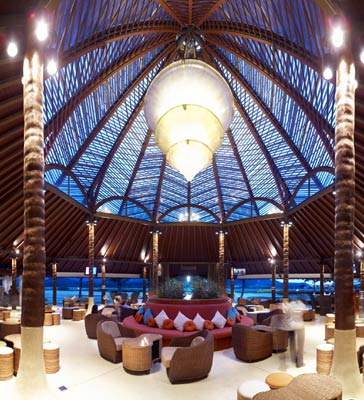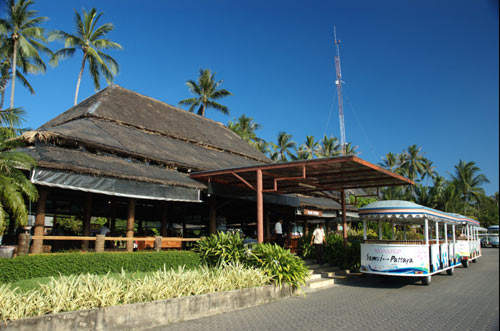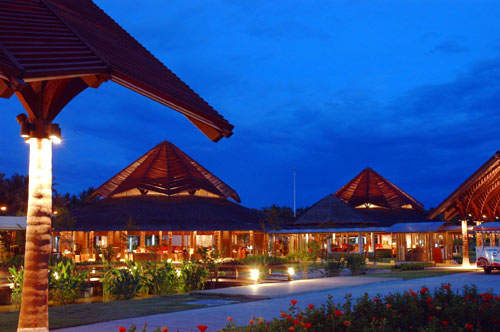Frequently described by visitors as ‘the most beautiful airport in the world’, the award-winning Koh Samui Airport proves that it is possible to be both environmentally friendly and aesthetically pleasing.
Built at the behest of Bangkok Airways, who own and run the airport, Koh Samui opened in 1989 and immediately scooped an Environment Impact Assessment Award for its use of locally produced palm leaves and natural, open-air cooling system.
In January 2004, the airport began a 500 million baht ($15m) expansion programme. Six new terminals – four domestic and two international – opened in 2007, allowing the airport to accommodate 16,000 passengers a day and increasing the annual passenger capacity from 1.3 million to six million. In 2009, the airport handled 1.3 million passengers and 17,707 aircraft operations.
However, the aesthetics of the airport have not been compromised. The new terminals, built by Ritta Co Ltd, have been designed to look and feel like a tropical resort.
It is a low-rise development with thatched roofs, palm-tree pillars and wooden and rattan walls in an open-air layout that blends with its coconut-plantation surroundings.
Koh Samui airport origins
Koh Samui was the brainchild of Dr Prasert Prasarttong-Osoth, president and CEO of Bangkok Airways, who wanted an airport on the island to help establish his new airline.
After enlisting the help of the Habita Company, who designed the airport, Dr Prasarttong-Osoth’s vision became reality when construction began in 1982.
Seven years and an estimated 800 million baht later, the airport was officially opened on 25 April 1989, with a 1,800m runway and a total area of 800,000m².
Eight years later on 25 September 1997, Samui was upgraded to a customs airport with the addition of immigration facilities, customs services, new passenger terminals and additional direct flight routes into Samui.
Koh Samui airport design
Samui Airport has been designed to fit sensitively into its surroundings whilst being kind to the environment. Built using local materials such as palm, wood and rattan; the largely open-plan design often negates the need for air conditioning.
The new terminal at the airport combines the ambiance of a Polynesian resort and incorporates it with a contemporary Thai design, impressing the visitors with the minimalistic architecture.
Koh Samui Airport has won several awards for its design, notably gaining first place in the Outstanding Architecture competition staged by Siam Architects under the patronage of the King of Thailand in 1998 and a Board of National Environment Award for aviation environmental protection and awareness in 1989.
Samui airport expansion
Although the official opening of the new-look Koh Samui Airport took place in July 2008, the new terminals were fully functional for domestic flights in May 2007. The international terminals, with a total passenger area of 73,000m², commenced operations in September 2007. July 2008 hosted the grand opening of the new passenger terminal and the Samui Park Avenue.
The Samui Park Avenue lies in between the departures and arrivals terminals in an area of 6,400m² and features a 20-unit shopping mall. The shopping complex features well-known shops, spas and restaurants, a cuisine garden, massage centre and even a pharmacy shop. Many hotels are also present at the complex.
The passenger area is four times bigger than before and the runway has been extended to 2,100m to handle the proposed increase in flight numbers.
The highlight of the new development, which is now worth over ten billion baht, is a ‘walking-street’ based on the one in Shanghai. The area features an array of shops and places to eat and drink.
Thai gateway
Koh Samui Airport has facilitated an enormous boom in tourism on the island, which was previously only accessible by boat. Direct flights to Samui are now available from Bangkok, Phuket, U-Tapao, Chiang Mai, Singapore and Hong Kong, with more airports planned for the roster next year as Bangkok Airways expands its regional connections.
Other airlines operating to Koh Samui include Berjaya Air from Kuala Lumpur and budget airline Fire Fly from Penang, Malaysia.











